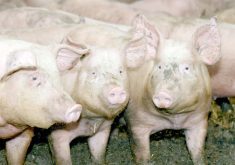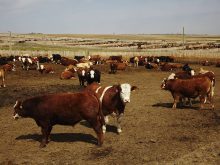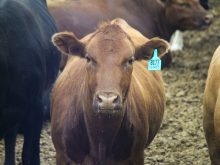Cattle producers often don’t suspect they have Johne’s disease in their herd until an animal is obviously ill.
That’s why dairy producers such as Michael Hall don’t think the country’s voluntary national Johne’s disease program goes far enough in its efforts to detect and eradicate the disease.
Producers know little about the disease, he said during a recent national Johne’s seminar held in Calgary. He worries poor performing cows may be sold into another herd and continue the cycle of infection.
“We have to identify these cows and yank them or we are just spinning our wheels.”
Read Also

Lending policy still focused on primary producers: Farm Credit Canada
Farm Credit Canada said it has not changed its business practices and remains committed to supporting all producers, after a report from an Ottawa-based media outlet claimed otherwise.
Hall participates in Ontario’s surveillance program and has had no positive cases, but he plans to continue testing because he buys a number of cows from other herds that could introduce infection.
He wants a compensation program funded by the industry or government so producers who have one or two positive cases can get rid of those animals and not suffer financially.
The national Johne’s disease prevention and control program was formed in 2006 and has two main focuses:
- Testing herds with low prevalence of infection.
- Keeping healthy and susceptible animals such as calves disease free by reducing the risk of transmission from animals that may be infected.
The industry usually assumes about a two percent prevalence, but Herman Barkema, an epidemiologist with the University of Calgary’s veterinary school with a special interest in Johne’s disease, said slaughterhouse statistics show it is detected in 16 percent of culled dairy cows.
“Farmers underestimate the prevalence of Johne’s in Canada by a factor of 10,” he said.
Further producer education is needed, as is more research into causes and prevention. A national testing program should establish prevalence rates, he said.
The biology of the disease creates testing anomalies and too many false positive results appear.
Barkema said testing should be done regardless.
“If you don’t know where you are now, you can never measure what the program has done in 10 years.”
Shawn McKenna of the Atlantic Veterinary College said testing could help identify “super shedders,” cows that pass on the infection in their manure or through milk to the next crop of calves.
“There are some indications the super shedding cow could potentially remain in the herd and look clinically normal for probably a year to a year and a half so there is lots of time for them to shed more,” he said.
Tests include the Enzyme-Linked ImmunoSorbent Assay (ELISA), which is a biochemical technique used to detect the presence of an antibody to a disease, and the more accurate but expensive and time consuming fecal culture tests.
“There are some believers that say cows that have really strong reactions to ELISA test are more likely to be super shedders, therefore if you had a really strong reaction on ELISA you could treat that cow more quickly,” McKenna said.
The ELISA test may fail because the bacteria invades the intestines but does not damage them. As a result, the immune system is not triggered soon enough in the early stages.
Infected animals without clinical signs can still carry the disease and spread it on the farm. It is rarely seen in animals younger than two or three years of age.
Scientists advocate a series of sound management practices, starting with good sanitation among young calves.
“Other national programs across the world have realized that prevention is more probably more crucial at this point than trying to test animals,” McKenna said.
Feed and water contaminated with manure from infected animals is the usual transmission method.
It is a highly resistant bacteria and survives heat and cold. It can remain in soil, stagnant water and manure for a year. Affected animals may develop diarrhea but their appetite remains normal. The diarrhea persists until death.
Economic losses among clinically infected cattle are low salvage value because of weight loss and lower milk production among dairy cows. Milk output could drop by 590 kilograms over the third lactation and worsen with each freshening.
Vaccines have been developed in the United States, New Zealand and Europe but are not used in Canada because they interfere with tuberculosis tests.
What is Johne’s disease?
- Johne’s disease, also known as Mycobacterium paratuberculosis (MAP), is a chronic, debilitating bacterial disease that can affect the intestines of all ruminant animals, including cattle, sheep and goats. It is closely related to the organisms that cause tuberculosis and leprosy.
- Up to 35 percent of cows with advanced clinical disease will shed MAP in their milk. Some calves have been born already infected, but this appears to occur only among dams that are shedding very high numbers of the organism. Calves under six months of age are the most susceptible.
- Johne’s is resistant to environmental degradation and many disinfectants. It survives in stagnant water, manure or deep soil for up to a year. It also withstands freezing at -14 C for up to a year.
- There is no practical diagnostic test to reliably detect Johne’s disease in asymptomatic living animals. The disease spreads very slowly, delaying the animals’ immune response and detection of the bacterium in blood and feces.
– Source: Alberta Agriculture















